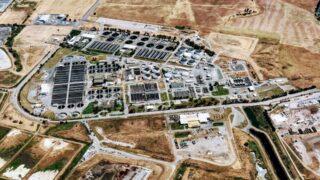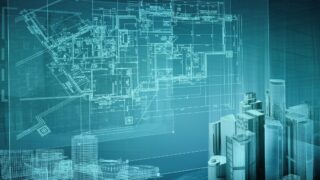SBR Is Making A Comeback
What Is SBR Technology?
SBR technology is a type of wastewater treatment system that combines the concept of batch and continuous processes in one reactor. SBRs are designed to optimize the operation, control, and sequencing of reaction tanks in an automated process that is capable of treating a variety of liquid wastes with high efficiency.
SBR systems use biological or chemical methods to convert wastewater into an acceptable effluent quality suitable for discharge or reuse. SBRs are most commonly used to treat municipal wastewater, industrial wastewater, and domestic sewage that contains high levels of pollutants such as nitrogen and phosphorus.
SBR systems use a sequential or “batch” process in which the reaction tanks are filled with wastewater. The SBR then cycles through the process steps of filling, reaction, settling, decanting, and idling. The SBR finds and measures the optimum conditions for each step to optimize the pollutant removal efficiency.
To learn more about Sequencing Batch Reactors, check out our How To Series!
What Are The Benefits of SBR Technology?
SBR technology offers a variety of benefits ranging from the reduced total cost of ownership to improved effluent quality.
Less Space Needed
SBR systems require less space than traditional wastewater treatment systems, and they can be more easily installed in existing infrastructure or integrated into new plant designs. SBRs also allow for more efficient plant operation and maintenance.
Improved Effluent Quality
SBR technology is highly effective at treating wastewater, and SBR systems are capable of achieving very high effluent quality. SBRs also feature conditioned aeration, which eliminates the need for additional treatment processes and reduces the total cost of ownership. SBR systems also feature superior control capabilities that allow for a more efficient operation.
Lower Operational Costs
SBR systems are easy to operate and require less maintenance than traditional wastewater treatment systems. They can also be operated at lower temperatures than traditional systems, which reduces energy consumption and overall operating costs. SBRs also often require fewer chemicals for operation, resulting in lower chemical usage and costs.
Automated Systems
SBRs are also automated, which means that they require fewer personnel for operation and monitoring. SBRs can achieve high levels of pollutant removal efficiency even in variable load conditions.
Why You Should Consider Sequence Batch Reactors For Your Next Wastewater Treatment Project
The basic principles of biological degradation processes were developed in the early 1900s. Several of these systems were in operation by the 1910s with the first fill-and-draw process used in the United Kingdom. Although the treatment process could achieve good effluent quality, there were many operational issues, which eventually favored the development of the continuous flow type of systems.
Improvements in equipment and technology, especially in aeration devices and computer control systems, have made SBRs a viable choice again. Since then, SBRs are being used successfully to treat both municipal and industrial wastewaters, particularly in areas characterized by low or varying flow patterns. Small municipalities, resorts, and several industries, including food and beverage, pulp and paper, and textiles, are using SBRs as practical wastewater treatment alternatives.

SBRs aren’t only being used in small capacity systems, however. Over the last few decades, SBRs are being used by large cities as well. The largest SBR facility in the world is in Kunming, China, and has 300 MLD/80 MGD capacity.
SBR plants are very practical for several reasons:
- In areas where there is limited space, treatment takes place in a single basin instead of multiple basins, allowing for a smaller footprint. The same effluent quality can be consistently achieved – as effective as conventional activated sludge processes – by using effective decanters, eliminating the need for a separate phase separation unit (e.g., a secondary clarifier).
- The treatment cycle can be adjusted to undergo aerobic, anaerobic, and anoxic conditions to achieve biological nutrient removal. Including nitrification, denitrification, and phosphorus removal, to some extent. However, discharge limits that require a greater degree of treatment may require the addition of tertiary treatment following the SBR treatment phase, like other conventional treatment processes.
- A sequencing batch reactor (SBR) can also act as a very effective high F/M selector, depending on the wastewater strength and feeding strategy. For high-strength wastewaters with a relatively large fraction of the SBR volume occupied by the influent wastewater, a high initial F/M ratio can occur. The subsequent reaction by the batch process is equal to a continuously operated plug-flow reactor.
Since the beginning of our company, we’re consistently asked when SBR would be available in Transcend Design Generator. We take those requests seriously and are happy to note that SBR is now included as an available technology within TDG!
Key benefits of enabling SBR as a technology
- It’s important to be able to compare batch vs. continuous flow options for different projects. Sometimes, especially when the footprint is constrained and there is not huge variability in peak vs. average flow, a batch process is better.
- For smaller capacities, it’s critical to be able to compare a conventional SBR w/ MBR or IFAS options. Seeing differences in footprint, power, and chemical consumption can be a key deciding factor.
- In certain geographies (e.g. India) SBR is accepted as the market standard, so this opens up TDG for those users to compare and contrast the benefits of the standard vs. alternative options.
Run your first SBR design for free by registering here – we’re looking forward to your feedback!







